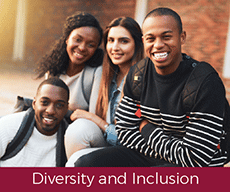Title
Paying for Law School: Law Student Loan Indebtedness and Career Choices
Document Type
Law Review Article
Publication Date
1-2020
Keywords
law students, financial status and behavior
Abstract
Student loan debt has reached crisis levels, topping $1.64 trillion dollars this year and surpassing credit card debt to become the second largest source of debt held by Americans. When discussing student loan debt, it is easy to fixate on the aggregate impact of the burdens this debt places on taxpayers, the economy, and borrowers alike, such as the depressive effects that student loan debt has on marriage, homeownership, and entrepreneurship. Yet, a discussion of which graduates are saddled with the largest student loans and how their debt obligations impacts their career choices is often absent from conversations about student debt and has been understudied to date. This Article contributes to the discourse about student loan debt and its potentially negative externalities by investigating responses from an original survey administered at four law schools, revealing novel findings about law students’ expected debt loads, career choices, and intentions to participate in the Public Service Loan Forgiveness program.
In Part I of this Article, the student loan crisis is more closely examined with particular emphasis on its salience for law school graduates. In addition, the first part of this Article provides credible descriptive evidence that rates and amounts of borrowing to attend law school impact law students differentially on the basis of their endowed characteristics, such as race and parental education. Next, Part II explores the Public Service Loan Forgiveness program, describing the program’s creation and implementation, in addition to evaluating its efficacy and the direct and indirect costs of its administration. Part III discusses two pervasive issues within the legal academy with significant social implications — the access-to-justice gap and the public-interest drift — against the backdrop of the student loan crisis and the possible answers that the Public Service Loan Forgiveness program could provide in addressing these issues. Part IV describes the data collected from the original survey, the methods used to analyze these data, and reports and discusses the results. The findings reported in Part IV offer insight into how a law student’s endowed and acquired traits influence their career intentions and provide evidence of the causal relationship between loan debt and career choice and intentions to enroll in the Public Service Loan Forgiveness program. Finally, this Article concludes by suggesting that the Public Service Loan Forgiveness program presents the best available option to address problems stemming from the access-to-justice gap and the public-interest drift, while also offsetting the negative effects of structural stratification in legal education.



